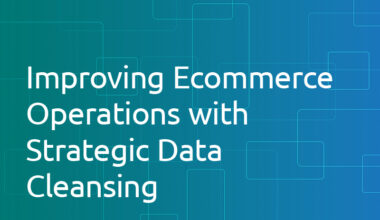Product data migration is a delicate process, and mistakes can lead to significant disruptions, data loss, or inaccuracies. Being aware of common pitfalls can help businesses navigate the migration journey more effectively.
Let’s look at the frequent errors businesses encounter when transferring product data between systems or platforms, so you can recognize and avoid these pitfalls to ensure a smoother migration process, data integrity, and optimal post-migration performance.
Common Mistakes in Product Data Migration
- Lack of Comprehensive Planning: Jumping into migration without a detailed plan can lead to oversights, missed steps, or misaligned objectives.
- Skipping Data Cleaning: Migrating data without first cleansing it can transfer inaccuracies, duplicates, or outdated information to the new system.
- Inadequate Testing: Not conducting thorough pilot migrations or tests can result in unanticipated issues during the actual migration.
- Ignoring Data Mapping: Failing to correctly map data from the source to the destination system can lead to misaligned or lost data.
- Not Backing Up Original Data: Overlooking the crucial step of backing up the source data can be disastrous if the migration process encounters issues.
- Underestimating Downtime: Not planning for potential system downtimes can disrupt business operations and frustrate users.
- Overlooking User Training: Assuming users will intuitively understand the new system without proper training can lead to post-migration inefficiencies or errors.
- Failing to Monitor Post-Migration: Not keeping a close eye on the system and user feedback after migration can allow issues to persist or escalate.
Tips to Avoid These Mistakes
Engage Stakeholders: Involve teams or departments that use the product data regularly to understand their needs and insights.
- Use the Right Tools: Invest in reliable migration tools or software tailored to the specific data and platforms involved.
- Document Everything: Keep detailed records of every step, decision, and change made during the migration process.
- Allocate Sufficient Resources: Ensure you have enough time, budget, and expertise dedicated to the migration process.
- Seek Expertise: If in-house expertise is lacking, consider hiring external consultants or experts in data migration.
While product data migration comes with its challenges, being aware of common mistakes and proactively addressing them can significantly smooth the process. By prioritizing planning, testing, and user engagement, businesses can navigate the migration journey with confidence and success.
If you’re concerned about an upcoming data migration and seeing your business suffer from these common pitfalls, contact us to find out how our data experts can help you execute a successful migration.
 1.416.619.5349 Ext.325
1.416.619.5349 Ext.325 







